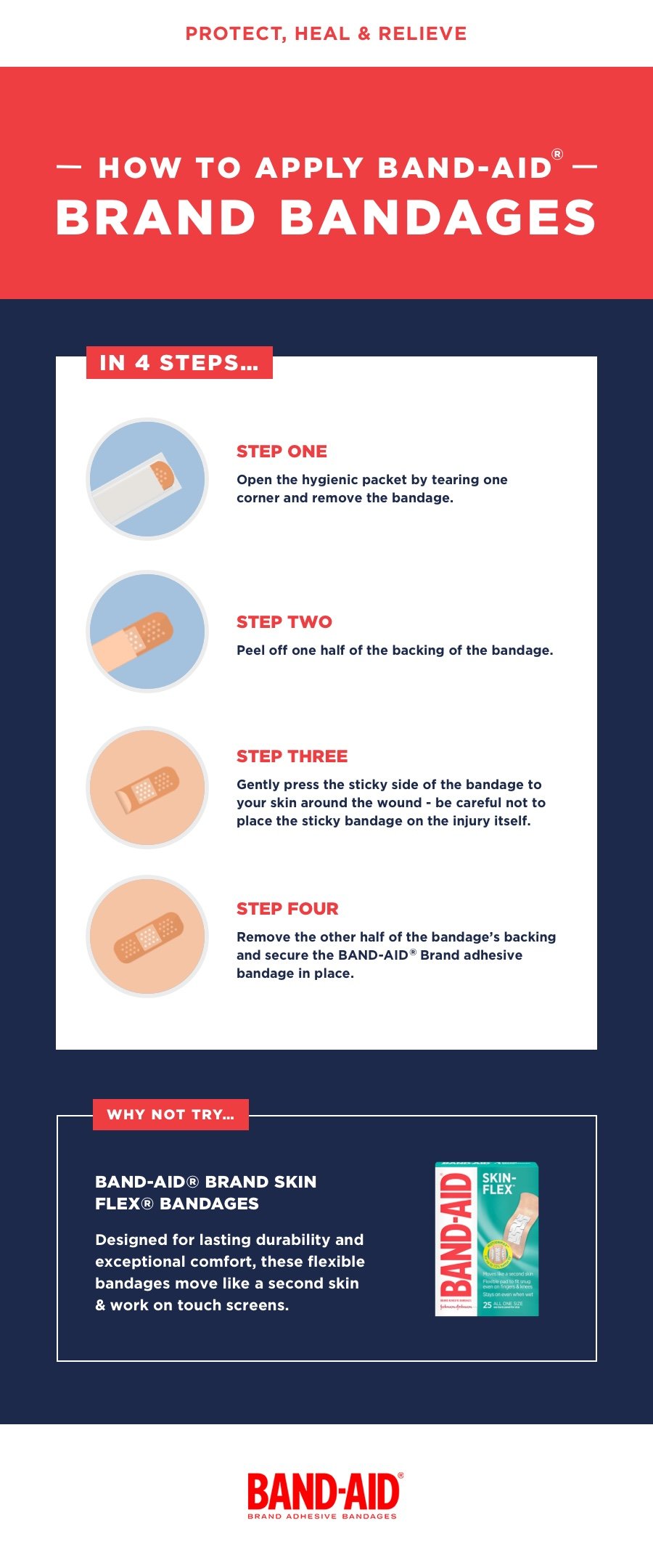Do Wounds Heal Faster Covered or Uncovered?
Wounds do not need air to heal – they need moisture. Leaving your wound uncovered can often dry wounds out, which may slow down the healing process.
The best way to heal a cut is to ensure it gets the moisture it needs1. This could be through the use of creams like NEOSPORIN® Original Ointment, and by keeping the wound covered with products such as BAND-AID® Brand adhesive bandages1.
Caring for a cut or scrape in this way can help keep new skin cells alive and protect the area from dirt, and the risk of infection.
Healing Stages of a Wound
There are four main stages of wound healing. These are2:
1. Stopping the bleeding (hemostasis):
When you first get a wound, whether it's a cut or surgical wound, you'll start to bleed. Normally, your blood should start to clot within a matter of minutes. Clotting means your blood cells begin to clump together to protect the wound and prevent further blood loss. These clots should eventually dry out and form a scab.
2. Inflammation:
Once the wound has clotted and closed, the blood vessels can open to allow fresh oxygen into the area. White blood vessels will also flow to the site to prevent infection and manage the repair process. At this point, you might notice some inflammation or clear fluid seeping from the wound. Inflammation is typically just from the increased blood flow to the area, while the clear fluid is usually a sign the injury is cleaning itself.
3. Growth and Rebuilding:
At stage three, your body will start to repair itself. Blood cells, including red blood cells with high oxygen levels, will flow to the injury site to help create new tissues. Your body will also start to produce more collagen around the injury, which helps knit your skin back together. You may also see a red scar start to develop.
4. Strengthening:
You may notice some stretching, itching or puckering around your wound as it nears the end of the healing process. Around three months after your injury, your new skin should be as firm as it was before, but the entire healing process could take up to two years depending on the extent of your injury.
Proper Wound Care: How to Help Cuts Heal Fast
Taking proper care of your injuries is probably the fastest way to heal a cut. With the right first-aid kit on hand, you can protect your cuts or surgical wounds from infection and create the right environment to support your body's natural healing process.
Here's how to look after your wound to help with fast healing:
1. Clean the Cut or Scrape
The best starting point for treating a wound is cleaning it. Otherwise, dirt and other debris could remain in the injury, slowing down healing or even stopping it altogether.
Be sure to thoroughly flush and clean the affected area with mild soap, water or BAND-AID® Brand Antiseptic Wash*. This product is specially formulated to temporarily relieve pain and discomfort while helping to germs.
When you're done, allow the area to dry.
(*Suitable for adults and children aged 2 years and older.)
2. Treat the Wound with a Topical Antibiotic
Infected cuts and scrapes heal much more slowly than those kept clean and infection-free. One of the best ointments to treat infection is NEOSPORIN® — the #1 doctor recommended brand of topical antibiotic in the US. Try NEOSPORIN® + Pain, Itch, Scar, which:
Provides 24-hour infection protection
Helps minimize the appearance of scars
3. Cover the Cut or Scrape
Dress the affected area with an appropriate bandage — such as BAND-AID® Brand SKIN-FLEX® Bandages — and keep it covered until the wound is completely healed. This creates a moist environment, perfect for healing, and helps protect the wound from dirt and germs.
4. Change Your Bandage Often
How often should you change a BAND-AID® Brand adhesive bandage?
Remove and reapply a fresh bandage daily. You should also change your bandage if you notice the wound becoming saturated with blood, pus, or discharge. This will help keep the area clean and lower your risk of infection.
How long should I keep a wound covered?
Keep your wound covered until it is completely healed. How long that takes will depend on the cut itself and how fast your body heals — everyone is different!

FAQs
How to heal an open wound fast?
Following basic care advice and properly cleaning, treating and protecting minor injuries can help your wounds heal more quickly. If you have an especially deep wound, you may need stitches to hold your skin in place as it knits back together. Be sure to seek medical advice.
How to tell if a wound is infected?
Infected wounds will usually become more painful instead of feeling better over time. They may also appear red and swollen and feel hot to touch3.
Why do my wounds heal so slowly?
Our bodies repair themselves more slowly as we get older. This is because there are fewer growth factors and stem cells left in the skin to help with repair. Chronic diseases and malnutrition can also hamper healing4.



